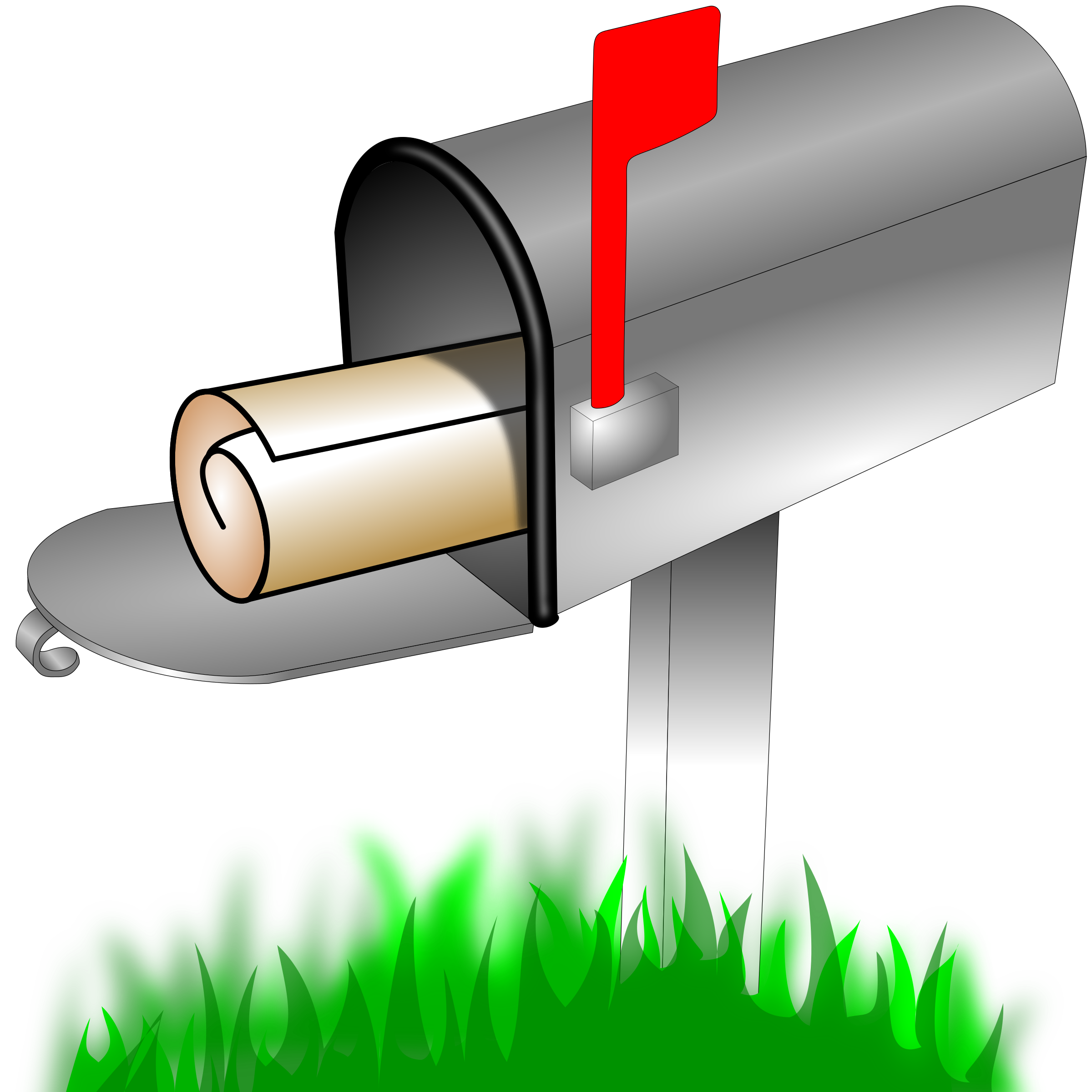Dramatic Play or Writing Center- Post Office
Dramatic Play or Writing Center- Post Office
Description

A open gray mailbox with a rolled up piece of paper inside. There is a red flag that is up and grass underneath
Clip art credit: www.openclipart.org
The dramatic play center provides opportunities for students to collaborate, engage in learning, and build language skills through conversations. Children have the opportunity to role play real-life experiences by taking on many roles in imaginative play. The writing center provides opportunities for students to express personal thoughts, feelings and opinions through print and illustrations. Students develop an understanding of the three purposes of writing and explores written language with a variety of writing utensils. Students will use a combination of drawing, dictating, and writing to engage in creative expression. Utilization of either f these spaces as a post office encourages students to explore the many roles of a postal worker. These may include mail carrier, mail sorter, and cashier selling postal supplies. Students may also create and send mail to friends. Students are creating stamps, writing letters or cards, selling items, sorting mail and delivering it the correct location. Children will engage in taking turns with peers and developing vocabulary through interactions with one another.
Purpose
- create stamps to place on mail
- writing opportunities by creating letters or cards for friends and family, for various occasions
- fine motor skills with manipulating writing utensils and stuffing envelopes
- develop a positive attitude towards writing
- identify the 3 purposes of writing (to express an opinion, share information, or tell a story)
- math skills with the calculation of costs of the postal supplies
- sorting of mail by name, location for delivery, and size
- practice letter formation
- practice connecting letters and words to convey meaning
- decision making opportunities
- expression of artistic ability through drawing of stamps and decorative art on cards and notes
- print exposure to name of room locations, classmate and family member names
- language opportunities by conversing with others about roles and responsibilities
- reading opportunities with exposure to a variety of books about writing letter or card examples
- expression of feelings and emotions
- creativity, imagination, abstract thinking
- oral communication, vocabulary
- cooperation, sharing, taking turns
- create personalized writing pieces using a variety of utensils and materials
- provide exploration opportunities with a variety of writing materials
Suggested Materials
- blank stamp templates, and other mailing labels
- provide a variety of blank cards, and letter templates
- provide a variety of sized envelopes or shipping boxes
- purchasing area with cash register and play money
- bins for sorting mail
- signs of the post office hours
- labels/signs with delivery destinations, map of the room, and postal worker jobs
- bag to carry the mail to deliver
- name tags for workers
- small mailboxes around the room for delivery purposes
- pens and pencils
- colored pencils
- crayons and markers
- highlighters
- dry erase markers and boards
- lined and unlined paper
- colored paper
- pre-made booklets
- spacer sticks
- sight word lists
- envelopes and cards
- variety or writing paper
- picture dictionaries
- sentence strips
- paper, clipboards, notepads
- reading materials - books about the different purposes for writing, and stories about postal workers, including nonfiction and fiction
Questioning Examples
These guiding questions can be used to assist the teacher, instructional assistant, or parent volunteers in supporting children's development and learning during play.
- Who did you write a letter or card to and why?
- What else could you share with that person?
- How will you sort all this mail?
- Where will this letter be mailed and how will it get there?
- How much will it cost to send your package?
- How will you deliver the mail? In what order?
Considerations
This center can be set up with the following areas included: Table area with a variety of supplies for writing letters, or creating cards to mail, an area with bins or baskets to hold stamps, envelopes, mailing labels, and cards. Also provide an area to sort the mail/packages into location bins, a Purchasing area (cash register, postal supplies for sale), and mailboxes will need to be placed around the room. Materials should be available to carry mail when delivering to classmates. Display posters and books with examples of real mail images. A basket/tote with books should also be in the center for students to explore. In addition, supply writing paper templates for cards and notes that students can express thoughts and feelings for others. Also, encourage children to try the different roles at the center including a postal worker and the customer creating and mailing items.
This center should allow for enough space for at least three students to play with the furniture and props. The dramatic play center should be located in an area of the room that enables students to communicate without disrupting other children's work and play. The writing center needs a table area and sufficient space for students to explore and interact with materials.
Photo Examples
Literature Connections
Many literature connections exist for this topic and can be read to students before introduction of the center or during learning of the theme of post office. These books can also be placed in the center for independent exploration by the children. The following are a few suggestions:
"Delivering Your Mail" by Ann Owen
"My First Trip to the Post Office" by Katie Kawa
"The Jolly Postman" by Allan Ahlberg
"The Post Office" by Julie Murray
"The Post Office Book: Mail and How it Moves" by Gail Gibbons
"Stanley the Mailman" by William Bee
"Delivery" by Aaron Meshon
"Postal Workers Then and Now" by Teacher Created Materials
Downloadable Resources
This is a center sign to be used at the post office center
Clip art credit: www.openclipart.org